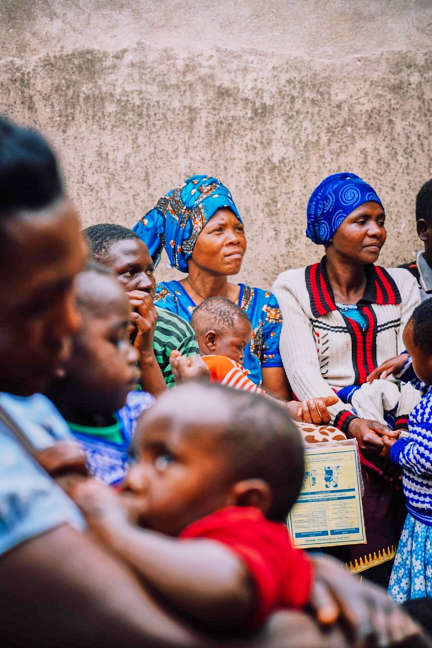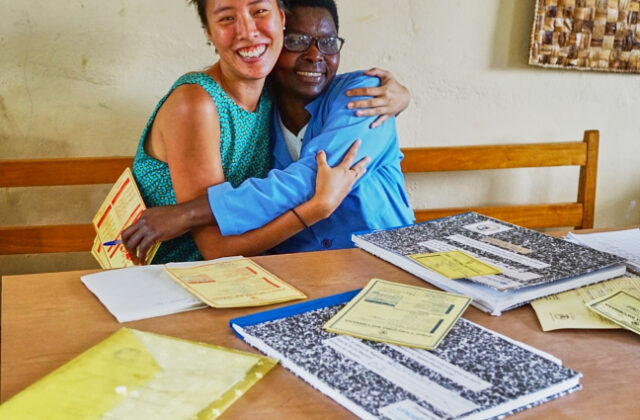Experiencing the Many Stories of Village Life in Rwanda
Serving as a Peace Corps Volunteer
Text and Photos by Kerong Kelly
I received my Peace Corps assignment in the spring of 2018. The application, interviews and security clearances had dragged on for months, but now here it was: I would be a Peace Corps volunteer in Rwanda focusing on child and maternal health. I had seen the movie “Hotel Rwanda” and read about the country’s recent and dark history, but my knowledge going in was limited. I certainly had no sense of how much my experience would teach me about loss and resilience and prepare me for a return to a very different America.
Being a Peace Corps volunteer is a 27-month commitment with the first 12 weeks spent in training, living with a host family in a regional town. My host family in Rwanda had four children, and I enjoyed being the big sister, especially to the youngest son, Jimmy, who was just entering kindergarten.
During training we learned the history and culture of Rwanda, how to monitor and evaluate projects, and many practical day-to-day skills for living and working in a rural village. More than anything, the goal of the training was to become fluent in Kinyarwanda, the national language. In Kigali, Rwanda’s capital city, you will commonly hear English or French, but not in the countryside. I would need to know Kinyarwanda to be able to get by.

I was assigned to a village two hours north of Kigali, tucked between three lush green mountains, not far from the Ugandan border. My house was a basic, but comfortable, single-level structure built of mud bricks and a concrete floor. Of course, everything was new to me—from lighting an outdoor charcoal cook stove to hauling water in big yellow jerrycans from a communal tap. I quickly learned that most daily activities simply take longer.
Like most villages in Rwanda, the one I lived in was a farming community where life is defined by the seasons—rainy and dry, two of each every year. When it rains it really rains, sometimes pouring eight to 10 hours nonstop.
The health center where I worked had about 20 rooms, including sick beds, offices, out-patient services and the pharmacy. It had running water in only one room and barely enough electricity for the two computers and a small, square TV in the waiting room. Yet the staff of 25 managed to serve 200-300 patients a day.
Each morning I would go to the health center and work closely with my Rwandan colleague, Marie Jeanne, on the monitoring and evaluation of children under the age of five. We would measure and weigh every child, looking for “stunting rates” (low height for age), the result of the chronic malnutrition that is prevalent in rural Rwanda. I also conducted home visits, gave cooking demonstrations and provided health and hygiene education—all in keeping with the “First 1,000 Days Initiative” on child and maternal health that Rwanda has prioritized as a national campaign.
In the Peace Corps we like to think of ourselves as “capacity builders” rather than development practitioners. Behavior change, like change in general, is slow and incremental, tremendously affected by communication failures and distrust in leadership. I never imagined how much my experience in Rwanda would prepare me for my return home.
About a year into my assignment, I found a website on how to build an oven and hired a local mason to make one. Yeast is quite available—the Rwandans use it to make banana beer (exactly what it sounds like). I used it to make bread and pizza for all my neighbors. This led to my Rwandan nickname. My name, Kerong, can be difficult to remember, but “Keke,” which means “bread” or “cake,” is easy. So, I became KeKe. My legacy of bread and cakes.
I was just a few months short of completing my assignment when Covid-19 hit and the Peace Corps evacuated all its volunteers. Suddenly, I was back home. One of my greatest regrets about having to leave so abruptly was not being able to see the many special people who had welcomed and shared their world with the umugore umunyamerika (American woman).
I saw much sadness and avoidable suffering during my time in Rwanda, but also much joy working with children and young mothers reveling in their time with their babies. I am wary of allowing any one scene to become a defining image. “Africa” has long been viewed in terms of magazine covers—the starving child, the tribal war lord. The Nigerian writer Chimamanda Ngozi Adichie has termed this “the danger of a single story.” The longer I lived in my village, the more I was able to look below the surface and see all the familiar social, cultural, religious and economic tensions found in any small community. Now, back home, I carry many thoughts in my mind, pictures and stories from Rwanda that I know will remain with me for the rest of my life.
Kerong Kelly and her family have lived in Norfolk since 2002. She is currently pursuing a graduate degree at Columbia’s School of International and Public Affairs.

